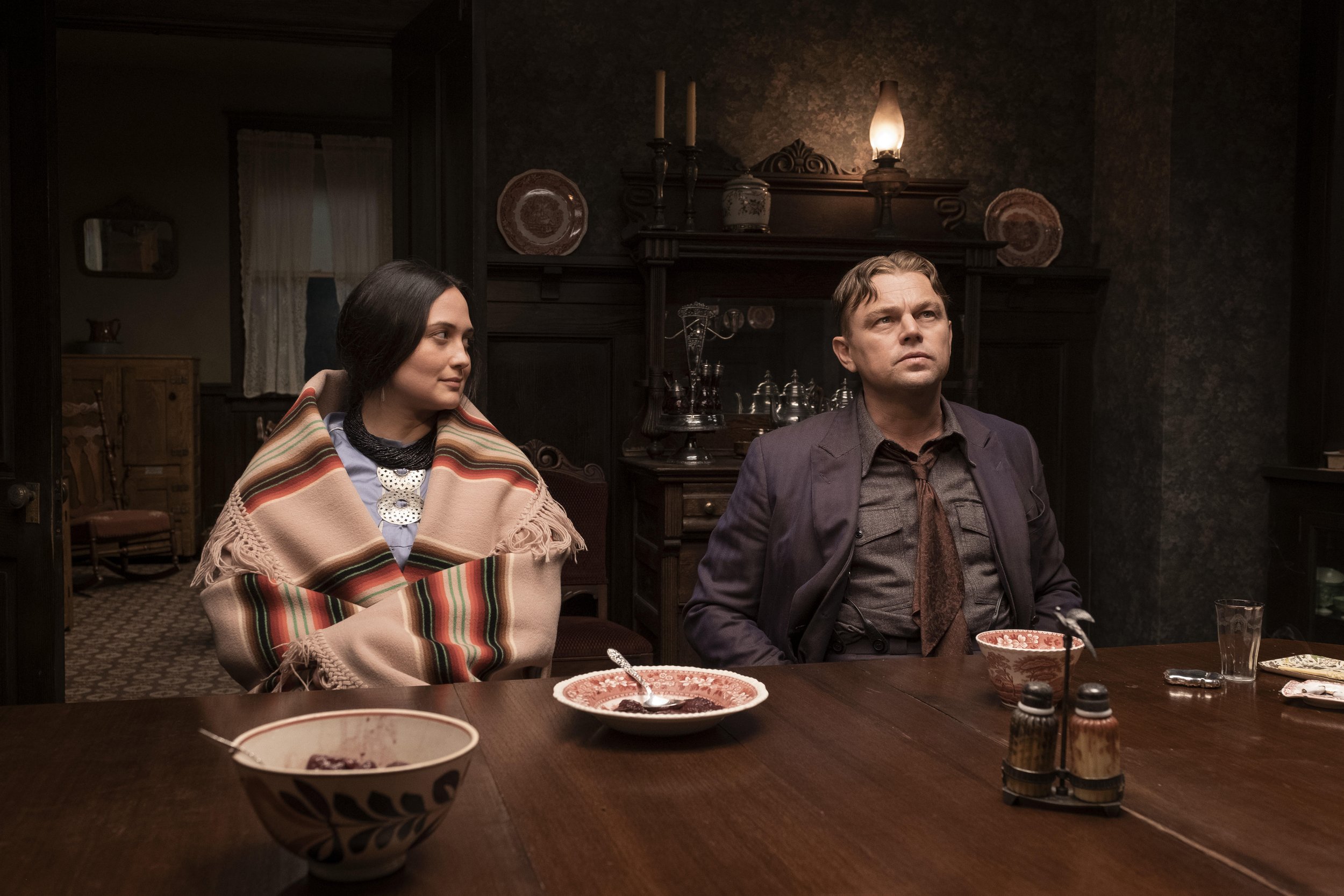‘Killers of the Flower Moon’ Movie Review: Martin Scorsese’s Engrossing Exploration of American Tragedy
From Jeff Nelson
From 1976’s Taxi Driver to 1990’s Goodfellas, legendary filmmaker Martin Scorsese has a masterful skill in building a world of crime on the silver screen. He once again explores human greed and corruption in Killers of the Flower Moon, highlighting a horrific chapter from American history. It’s a far cry from Scorsese’s greatest works, but it’s a winning combination between his old tricks and a new, striking perspective.
Based on a true story, Ernest Burkhart (Leonardo DiCaprio) moves in with his powerful uncle, William Hale (Robert De Niro) after serving in the war. The members of the Osage Nation earned unimaginable wealth after discovering oil on their land, ultimately drawing the attention of white outsiders. Ernest strikes an unlikely romance with a native woman named Mollie (Lily Gladstone), as tragic murders across the Osage Nation shake the community.
Killers of the Flower Moon shifts between multiple perspectives, although it primarily roots its story in Ernest. He’s an outsider who tells his uncle that his weakness is women, but it’s actually money, which drives him to inhuman lengths to obtain it. Greed grips the white folks, as they see the Osage Nation as an opportunity to enrichen their lives. Money has a notable part to play, but their greed goes beyond cash – they desire power, land, and influence.
Native Americans’ representation in the media still needs work, and even here, Scorsese and Eric Roth’s screenplay still pits the members of the Osage Nation as supporting characters in their own tragedies. Mollie increasingly puts her trust in Ernest over the years of their relationship, although the death that surrounds her leaves an unforgettable mark. The suffering is palpable and the violence is extreme, but first, we’re exposed to the life, beauty, and sense of humor surging through the vibrant community.
Scorsese magnifies on the true crime element of the story, rather than the dramatic underpinnings. The Osage Nation justifiably grows angrier with the federal government, as it takes an obscene amount of death to draw its aid, finally resulting in an investigation. Ernest and William’s legal stakes aren’t as gripping as the Osage Nation’s woes, particularly when it comes to Mollie’s desires for relief from the total devastation.
Killers of the Flower Moon contains some of the most impactful portrayals of the year. DiCaprio delivers one of the greatest performances of his career as Ernest. He utterly commits to the character with his cadence and harsh frown. De Niro’s William is devilishly good, persistently creating a sense of uneasiness on the screen. Meanwhile, Gladstone is absolutely spell-binding as Mollie, providing the film with a much-needed dose of sincerity and heart.
Scorsese’s filmography is rich with beautiful crafts, and Killers of the Flower Moon is no exception. Thelma Schoonmaker’s stellar editing drastically helps the film’s pacing through an intimidating runtime, while Rodrigo Prieto’s cinematography is a powerful asset that amplifies both the beauty of the Western setting and the infuriating tragedy of the story. Meanwhile, Robbie Robertson’s score is magnificent.
Killers of the Flower Moon is a cinematic behemoth that explores the ugliest sides of humanity amid an American tragedy. Gladstone is undoubtedly the highlight, even though DiCaprio and De Niro turn in astonishing work. However, some of the characterizations hit a snag that weigh down the final third of the film and greatly temper a much-needed emotional punch. At 3.5 hours, this Scorsese feature is quite the commitment, but it’s well-paced and consistently engrossing, even despite its issues.
Rating: 3.5/5
Killers of the Flower Moon hits theaters on October 20th, 2023.

